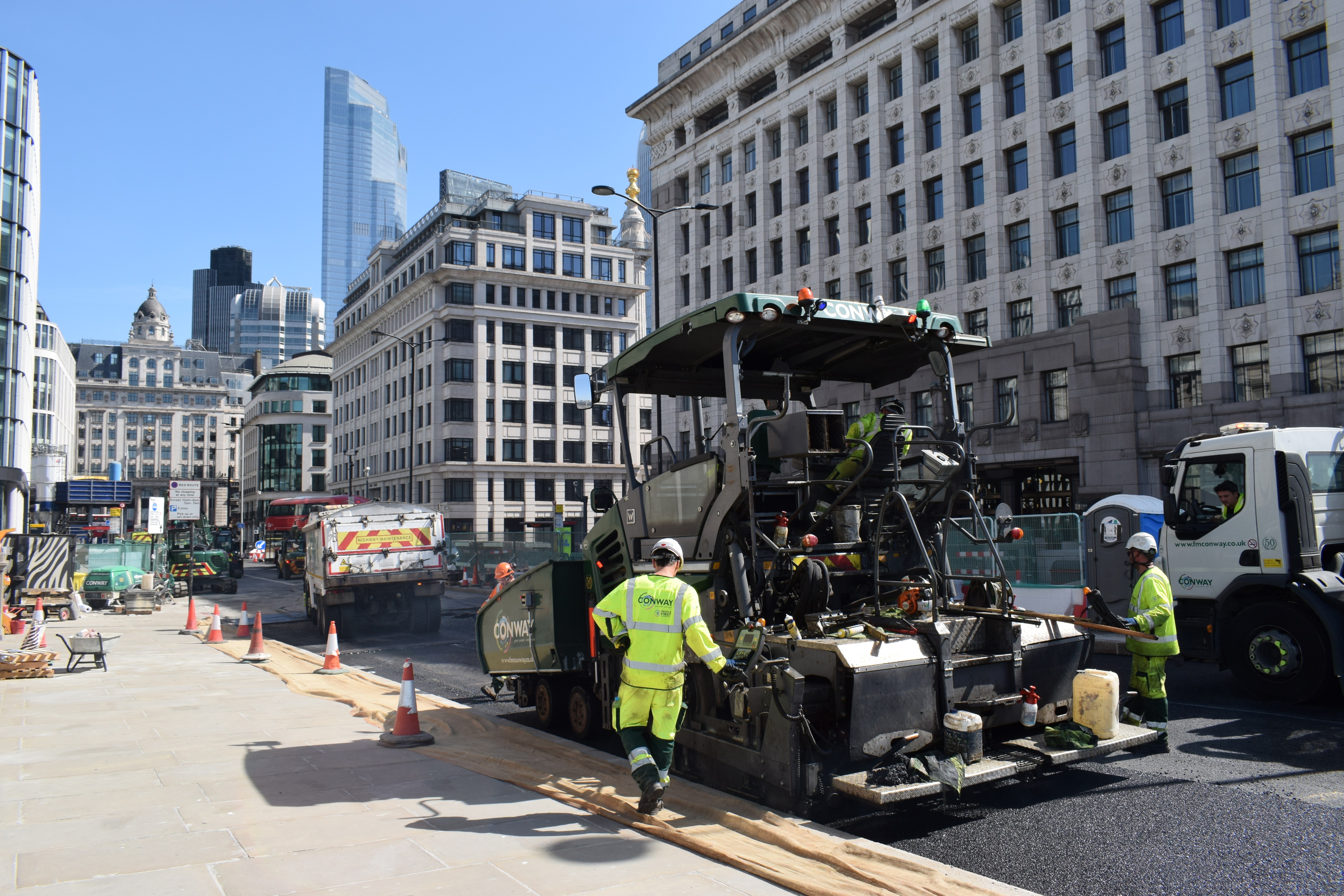Delivering Innovation
Working for the City of London Corporation, FM Conway was contracted with replacing the deteriorating waterproofing, laying a new carriageway surface, as well as carrying out a repair of the damaged concrete deck and replacing the structure’s support bearings.
In order to achieve this, FM Conway was required to remove the existing surfacing over the carriageway and footways, using a full depth planer to mill out 2,500t of materials, which was then taken to its Dartford plant for recycling. Once exposed, the concrete deck underwent repairs, before a new waterproofing layer covering 9,580m2 was installed on the bridge.
Following this a new central reservation was cast, paving and kerbs on the west footpath reinstated and the west carriageway was surfaced. To ensure that the bridge could remain operational throughout the works, the team focused on one carriageway at a time, enabling traffic to be switched for the same work to be done on the east carriageway.
Whilst this was happening, the team simultaneously replaced the structures support bearings, initially focusing on 12 in the north abutment. By using hydraulic jacks between each bearing, the structure was jacked up 2mm so that the team could enter the confined space, remove the old bearings and install new ones.
However, the south abutment required a different method. Using a suspended working scaffold platform under the bridge, the team used hydro-demolition to remove the other 12 old bearings before removing the contaminated water from site.

